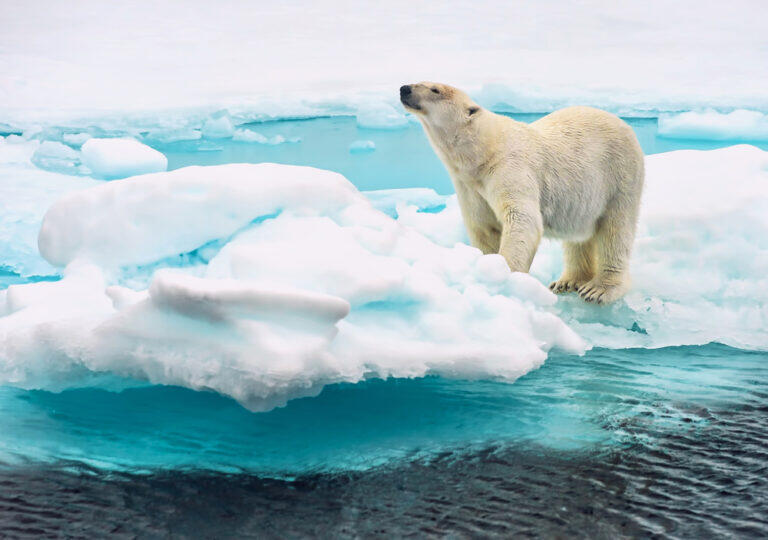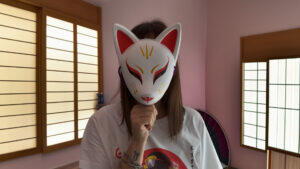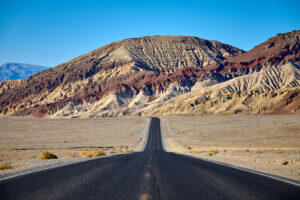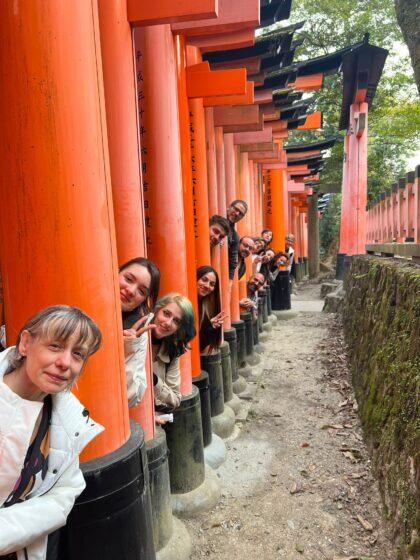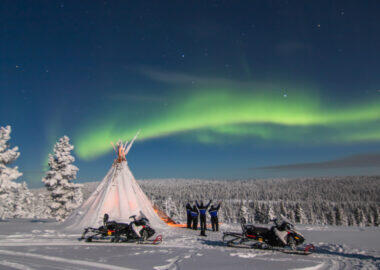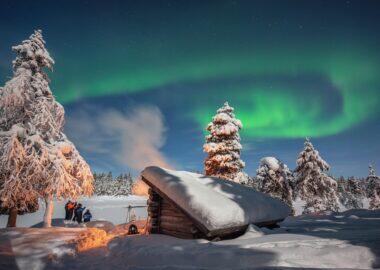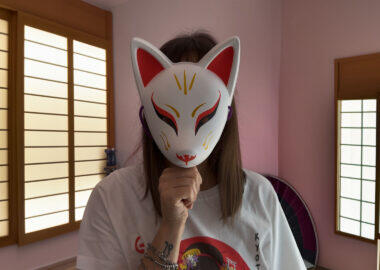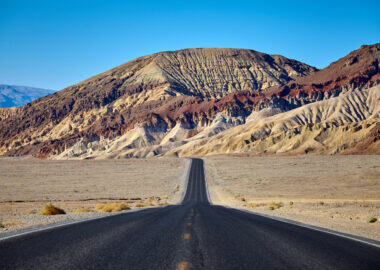Due to the great success that our Tour Operator had with the interview in Italian with Kjersti Ellen Noras, head of Tourist Office on Svalbard, we would like to offer the English version to all Svalbard’s fans and all the Blueberry Community. In the interview we learn how is living just a few steps away from the North Pole. Enjoy!
Q: Can you tell us a little bit of Svalbard’s history? Who did discover them, and why people started moving up there?
A: Spisbergen was discovered by a Dutch navigator/explorer called Willem Barentsz 17th of June, 1596. He reached the east coast where the mountains are very pointy, and he called the island Spitzbergen, which means “pointy mountains” in Dutch. Svalbard is the name of the whole archipelago, and the word Svalbard is ancient Norwegian and means “cold coast”.
It soon became popular amongst trappers because of the easy access to whales, walruses and seal; even though the land was cold and unfriendly (there was a looooooooot more ice around the islands at that time.)
In 1905 an American by the name John Munroe Longyear came to Spitbergen, discovered there was coal in the mountains and decided to try to work a mine here. In 1906 he opened the first mine and the settlement was named Longyear City. The mine he opened is today called “Amerikanergruva”, which means “the American mine” in Norwegian. He thought it would be easy money for him, but it was a lot harder than he thought, and his miners weren’t too happy. In 1916 he sold his mine to “Store Norske Spitsbergen Grubekompani”, the Norwegian mining company, and they kept expanding. Norwegians came up from the mainland to work in the mines and lived here all summer period working in the mines. They came with the first boat in the spring and left with the last boat in the autumn. (the fjords freezes over in the winter, so no boats could come to Longyear in the winter). The society just kept developing and now we are a settlement of 2100 people and the three pillars to keep the settlement alive is mining, science/research and tourism.
Q: Which is the climate of Svalbard archipelago?
A: The climate in Svalbard is called arctic desert, because the humidity is so low. We have very little rain during the year, and probably a lot less snow than people would think. J But we do have a lot of wind. In the summer we can have everything between 0 degrees and (if we are very lucky) 14 degrees, but the middle temperature is around 7 degrees Celsius. The winter can give us from – 5 to – 35.
Q: How do you cope with the daily life during the long winter months (with over two months of complete darkness)?
A: Some people find it hard, but personally I don’t. The 2 months pasts very fast, with Christmas in the middle. It’s just something we get used to, I guess. I’ve got a daughter that’s 15 and she finds it hard because she gets so tired during the dark period. A couple of years ago, Phillips had an experiment going here, with their daylight lamps. Every citizen in Longyearbyen would get a lamp if one signed up for the project, and I think maybe the lamps help. J But we just go on with our daily life and wait for the light to return.
Q: Do you feel isolated living in Svalbard?
A: In the winter time, when the planes are unable to land because of the weather, we can feel a little isolated. Or maybe not isolated, but we get very aware that we live on the top of the world, in the Arctic . But it is really not very often the planes can’t land, so it is not really a problem.
Q: Why did you chose to live there?
A: Because I find the Arctic nature really fascinating and being able to work with tourism in an Arctic environment is really the best job in the world.
Q: Which are the main settlements in Svalbard?
A: The main settlement is Longyearbyen with 2100 inhabitants. We have a Russian settlement in Barentsburg that has about 350 inhabitants. Ny-Ålesund is a science settlement with 40-100 inhabitants, depending on the season, and Poland has a small science settlement down in the south with 12 inhabitants. The only places you can visit as a tourist is Longyearbyen and Barentsburg, but there are no roads connecting the settlements.
Q: How hard it is living in Svalbard?
A: I don’t find it hard at all. I love it here.
Q: How is living in Svalbard as a child?
A: I asked my kids about this and here is what they said(they are 10 and 8 years old): It is great in the summertime, but it can be hard in the winter because the winter is so long, and one has to wear some much warm clothing and that makes it hard to run and jump and play. The summer is great because one can play with other things than in the winter. Biking, go on boat trips. But we like living in Longyearbyen.
Here is what my 15-year old said: It’s ok, I guess. It is a little hard because it is so few people here, and you have to deal with “everyone knowing everything”. We never know how long people will stay here, so we have to deal with a lot of people coming and going. People are moving up here, and some people can’t take the difference from the mainland or cope with the harsh environment and the darkness, so they leave again. But it is also very cool because we can drive snowmobiles and do ice caving. All in all it is a very different, but great place to be.
Q: Are there hospital facilities in Svalbard?
A: Yes. But we do not have a pediatrician, so pregnant women have to travel to the mainland to give birth, either to the hospital in Tromsø, or in their hometown.
Q: Is the polar bear a real threat for the human beings?
A: Hmmm…. Yes, if he gets provoked. In general the polar bear do not want to eat humans, because we are to skinny. We don’t have enough fat, and they prefer the seals with their great fat. BUT; if scared or feeling threatened he is very dangerous. We also see that in the summer, when it is really hard for the polar bear to hunt and find food (he is dependent on the ice to be able to hunt for seals), he gets desperate with hunger and can attack humans.
Q: Do Svalbard inhabitans develop a particular relationship with such an extreme environment, which is at the same time so fragile and hard?
A: Yes, we do. We are very aware of what we are doing when out in the Arctic nature, and really try to take care of the environment the best we know how. We know how fragile it is, and we always try to educate the guests in taking care of the Arctic.
Q: How many tourists visit Svalbard every year?
A: Last year we had a number of about 35 000, but that is not counting the cruise tourists. They only stay for a few hours, but they count about 44 000.
Q: Which is the main reason for visiting Svalbard? What are tourists looking for and how do they react as soon as they disembark from the plane?
A: The beautiful and different nature. The different experience. Something different than sun and sand. We don’t have any trees, so it looks a little naked, but we have a fantastic geology and people find that quite breathtaking. They often react with surprise and astonishment.
Q: Which is the best season to visit Svalbard?
A: It really depends on what you want to do. The activities in the summer and the winter are very different. If you want to drive a snowmobile or go dogsledding, do ice caving or long skiing expeditions, the best time is March and April. If you want to go on boat trips, full day or just part time, go hiking in the mountains or kayaking or horseback riding, the best time is July and August.
Q: Where does a Svalbard inhabitant go on holiday?
A: Some place warm. Lots of people from Svalbard go to Thailand or the Filipinas. I and my family are going to Paris in a week. Some people like to stay on the beach to experience the sand and the sun, someone like to visit big cities, and both holidays gives us a very different experience from home.
If you like our interview or if you have other questions for Kjersti, leave us a comment or write us an email at info@blueberrytravel.it
